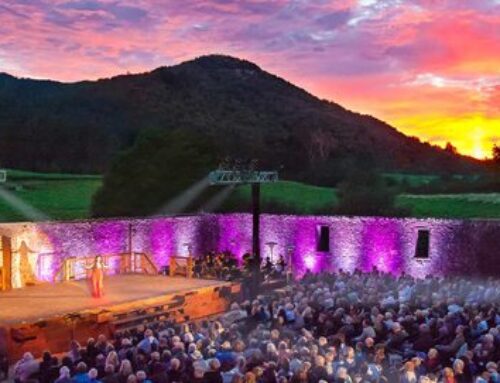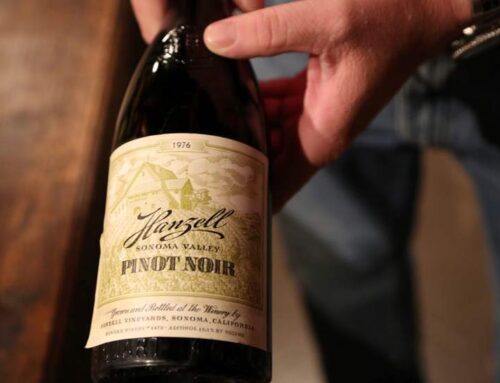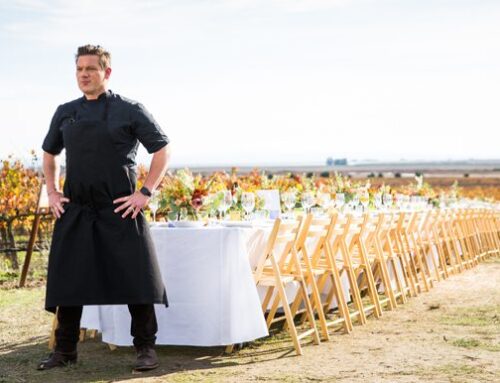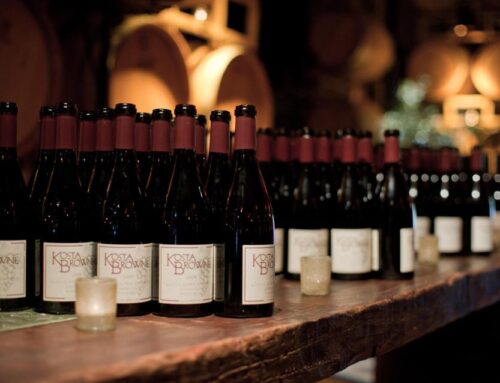
The printed version was first released last year, charting open-to-the-public dairies and Sonoma’s artisan cheesemakers, but has continuously been so quickly “sold out” (if a free publication can be called that) that some would-be cheese hunters haven’t been able to find it. Lo and behold, it’s now posted online in all its four-color style.
<
First, just download the Cheese Trail Map. Then call ahead, since some cheesemakers are open to the public on a regular basis, while some are open seasonally or only by appointment.
You might discover:
Achadinha Cheese Company, Petaluma, 707-763-1025, achadinha.com.
Jim and Donna Pacheco’s 900 goats graze year-round on verdant pastures at the Pacheco Family Dairy, with grass supplemented with alfalfa and brewers’ grain from local breweries. Donna handcrafts all cheeses and makes her own smoked summer goat sausage.

In the heritage farmstead tradition, these country cheeses are produced in small batches from one-to-two day old milk, then immediately made into cheese. This seals in the fresh, mild flavor, even in the aged cheeses. Owner Patty Karlin also offers cheesemaking classes.
Matos Cheese Factory, 3669 Llano Road, Santa Rosa, 707-584-5283.
Joe and Mary Matos grew up in the Portuguese Azores on the lush volcanic island of Sao Jorge, noted for its delicious cheeses. They relocated to Santa Rosa in the 1970s, carrying the recipe for their native cheese with them.

This third-generation family dairy was founded by Irish immigrant Robert McClelland, and is now operated by his son George, George’s wife Dora, and their daughter Jana. They specialize in European Style Organic Artisan Butter, and visitors are able to watch a cow being milked and pet a calf in the nursery.
Pug’s Leap, Petaluma, 707-238-2126, pugsleap.com.
After running their goat dairy, White Whale Farm, for several years, Anna and Dan Conner took over Pug’s Leap in 2010, continuing the high-quality cheesemaking tradition.
Weirauch Farm & Creamery, 707-347-9401, Petaluma, weirauchfarm.com.
Joel and Carleen Weirauch raise dairy sheep for seasonal production of raw aged cheese. They’ve made creative re-use of portable trailers for milking and cheesemaking in an Animal Welfare Approved method.

What’s the difference between artisan cheese and cheese I can buy in any grocery store?
The cheeses made by artisan cheesemakers are made in small batches and often reflect the unique flavor of a region and the cheesemaker’s own creativity.
What do “artisan” and “farmstead” mean?
An artisan cheesemaker makes cheese in small batches, making anywhere from a few pounds to a few hundred pounds at a time. A farmstead cheesemaker makes cheese with milk from animals on their own farm.
How much milk does it take to make a pound of cheese?
To make one pound of cheese, it takes about five pounds of sheep’s milk, or seven pounds of goat milk or 10 pounds of cow’s milk.
How can I schedule to see some of the cheesemaker’s who have tours by appointment?
Note that most cheesemakers will have tours during from spring through fall when fields are dry and animals are milking.

After you’ve opened your cheese and eaten a bit, rewrap the cheese in wax or butcher paper and store it in your vegetable crisper. Try to avoid wrapping it in plastic as it can impart an off-flavor to your cheese.
What’s the best way to eat cheese?
At room temperature. Take the cheese out of the refrigerator about an hour before serving so that you can taste all the nuances of its flavors.
How soon do I need to eat the cheese once I’ve purchased it?
Usually, it’s best to eat cheese within two weeks after purchase. That way you will taste the cheese as the cheesemaker meant you to.
Can I eat the cheese if there is dark mold on it?
If you see mold on a fresh cheese like cottage cheese or a soft cheese, it’s best to throw it out. However, with a soft cheese like Brie or a harder cheese, you can feel comfortable cutting off the mold and eating the rest.
Details: cheesetrail.org
Tip: There’s little better way to get your cheese on then to get some friends together and make a fun-filled adventure of it traveling from farm to farm in your own limo. Pure Luxury Transportation can even stock your limo with sparkling wine for the perfect en-route sipping and pairing.
Hey! If you liked this article, subscribe to our blog and “Like” us on Facebook!





